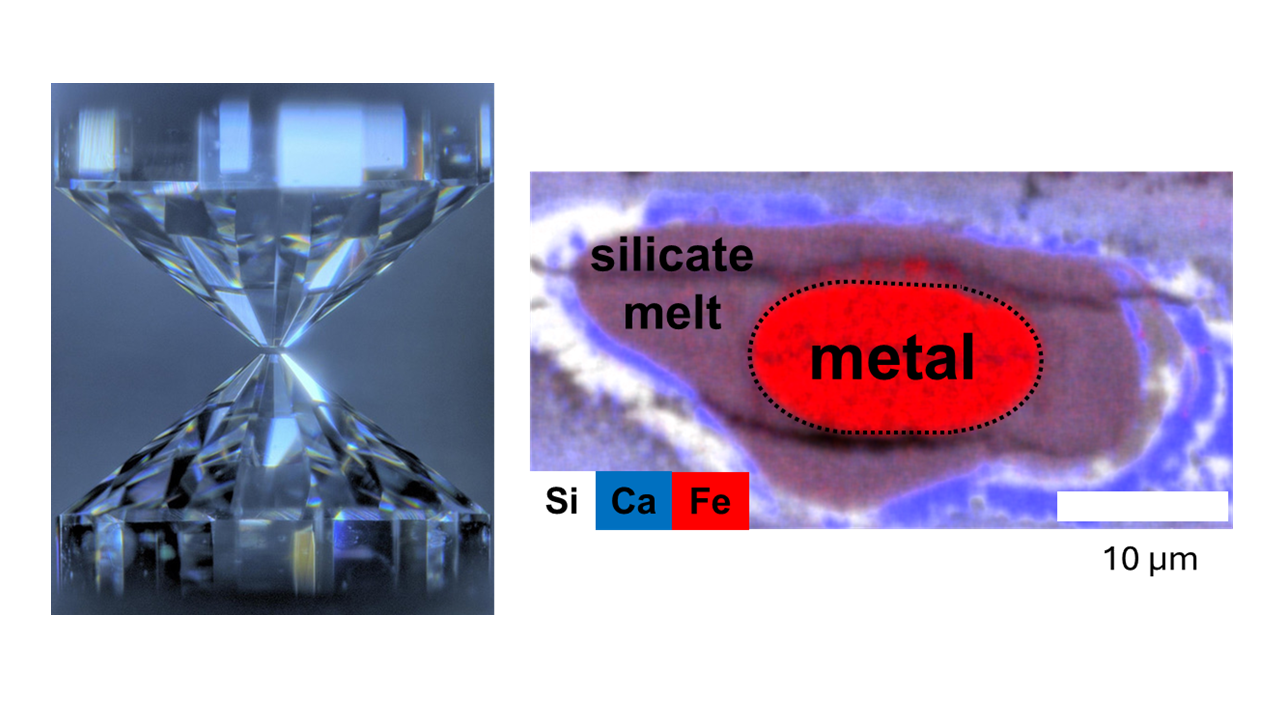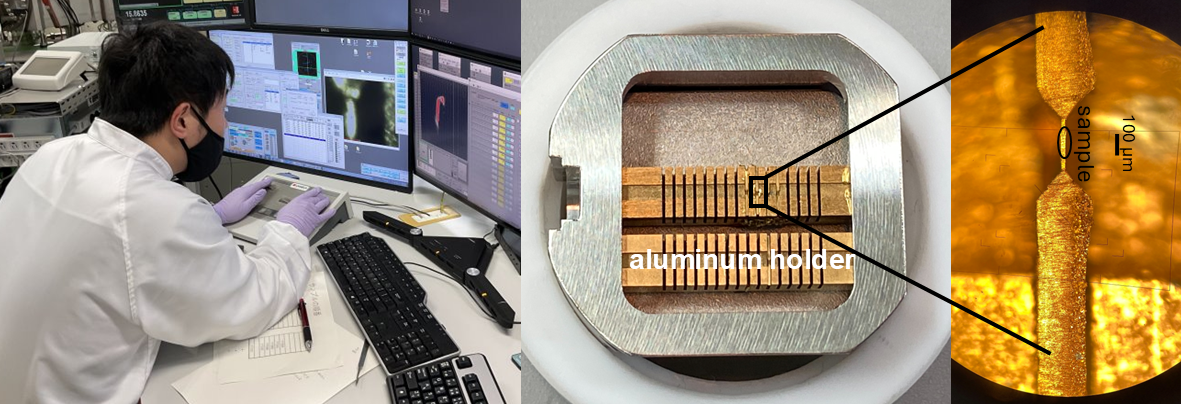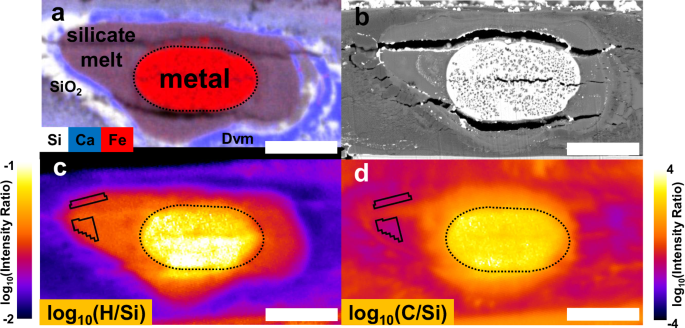
How much water and carbon does the Earth, especially the Earth’s core, really contain?
Water and carbon are two of the key elements that make the Earth the “planet of life.” While oceans are visible reservoirs, the mantle is believed to contain as much water as the oceans, or even more. Similar weight fraction of carbon is also thought to exist in the mantle. However, we still do not know how much hydrogen and carbon are hidden inside the Earth’s core. Without that knowledge, we cannot determine the total inventory of these volatile elements in the planet. If we can estimate their abundances in the bulk Earth, including the core, we can gain crucial clues about how and from where the Earth received water and carbon. Earth’s core makes up about one-third of the planet’s total mass. Roughly 95% of it is the molten outer core, which is known to be about 8% less dense than pure iron, which means that the core contains significant amounts of lighter elements. The “core light-element composition” has puzzled scientists for more than 70 years. Possible major light elements include hydrogen, carbon, oxygen, silicon and sulfur.
During the planet’s infancy, Earth was likely covered with a magma ocean over 1000 km in depth. Droplets of molten iron sank through the magma ocean to form the core at Earth’s centre, reacting chemically with magma (silicate melt) and incorporating the light elements depending on their partition coefficients between molten iron and silicate melts. Previous experiments investigated the partitioning of hydrogen and carbon separately and found that both prefer the metallic phase under high pressure. However, when both hydrogen and carbon coexist, they interact with each other, possibly changing the partition coefficients.
How could we overcome difficulties in sample preparation and measurement?
To simulate the extreme conditions of Earth’s core formation—typically pressures around 50 GPa and temperatures near 4000 K—we used laser-heated diamond-anvil cell (DAC) experiments combined with X-ray diffraction (XRD) measurements at the SPring-8, a synchrotron radiation facility located in the western part of Japan. These experiments were technically demanding. The samples used in this study were tiny, with a measurement area only a few tens of µm in diameter, making their preparation quite difficult. During heating with a laser, temperature fluctuation sometimes occurs, which erases hours of preparation. After repeated failures, we finally succeeded in ten experiments.
We then went to the Hokkaido University in the northern island to perform secondary ion mass spectrometry (SIMS) measurements to determine hydrogen and carbon concentrations. Handling tiny samples was a challenge in itself—obtaining flat surfaces, perfect focus and clear ion maps required patience, precision and years of refinement. A major part of our effort was devoted to developing and optimizing an aluminum holder, which has a number of slots for vertically inserting many samples recovered from high-pressure experiments. This design allows for measurements of a series of samples under single machine conditions. When we finally obtained clean SIMS images after years of effort, it was a moment of pure joy. We made countless trips to the Hokkaido University and the SPring-8, repeating experiments and discussion as a team. This project truly became a story of persistence and collaboration across institutions and disciplines.

What did we find?
In this study, we used a DAC to generate pressures of 33–56 GPa and temperatures of 3630–4760 K and found how hydrogen and carbon are partitioned between molten metallic iron and silicate melts, which represent core-forming metal and a magma ocean, respectively (a magma ocean solidified into a rocky mantle after the core-forming event). We found that under such high-pressure and -temperature conditions, both hydrogen and carbon are siderophile (iron-loving), and that when both elements coexist, their siderophile nature is significantly reduced.
Using the partition coefficients determined in this study, we constructed models of Earth’s accretion and subsequent core formation. By varying parameters such as impactor size and the depth of a magma ocean, we searched for models that simultaneously reproduce key observational constraints, including the amounts of water and carbon present in the oceans, crust, and mantle as well as the FeO content of the mantle and the mass fraction of the core in the whole Earth. Through such modeling, we successfully estimated the amounts of hydrogen and carbon in the core, which gives their bulk Earth’s total inventory.
Meteorites that represent the Earth’s building materials are broadly classified into carbonaceous chondrites, which are rich in water and carbon, and non-carbonaceous chondrites being poor in these volatiles. It has been traditionally considered that the Earth’s water and carbon were supplied mainly by carbonaceous chondritic materials. However, our results indicate that up to 53% of Earth’s water and up to 72% of its carbon could have been derived from non-carbonaceous chondritic materials.
Need for future studies
Our results constrain the amounts of hydrogen and carbon in the Earth’s core. Nevertheless, the core should include other light elements such as sulfur, silicon and oxygen as well, and more studies are necessary to solve the long-standing problem—the core light element composition. In addition, our modeling is based on the assumption that Earth’s water and carbon were delivered by chondritic materials (chondrites are primitive meteorites originating from the asteroid belt, located between Mars and Jupiter). However, it is possible that these volatiles were in part supplied from further distance, or that at least hydrogen was incorporated directly from the primordial solar nebula gas—mainly hydrogen and helium—that surrounded the proto-Earth. Further investigations using hydrogen isotopic compositions will therefore be essential to test these possibilities.
Follow the Topic
-
Nature Communications

An open access, multidisciplinary journal dedicated to publishing high-quality research in all areas of the biological, health, physical, chemical and Earth sciences.
Related Collections
With Collections, you can get published faster and increase your visibility.
Women's Health
Publishing Model: Hybrid
Deadline: Ongoing
Advances in neurodegenerative diseases
Publishing Model: Hybrid
Deadline: Dec 24, 2025


Please sign in or register for FREE
If you are a registered user on Research Communities by Springer Nature, please sign in